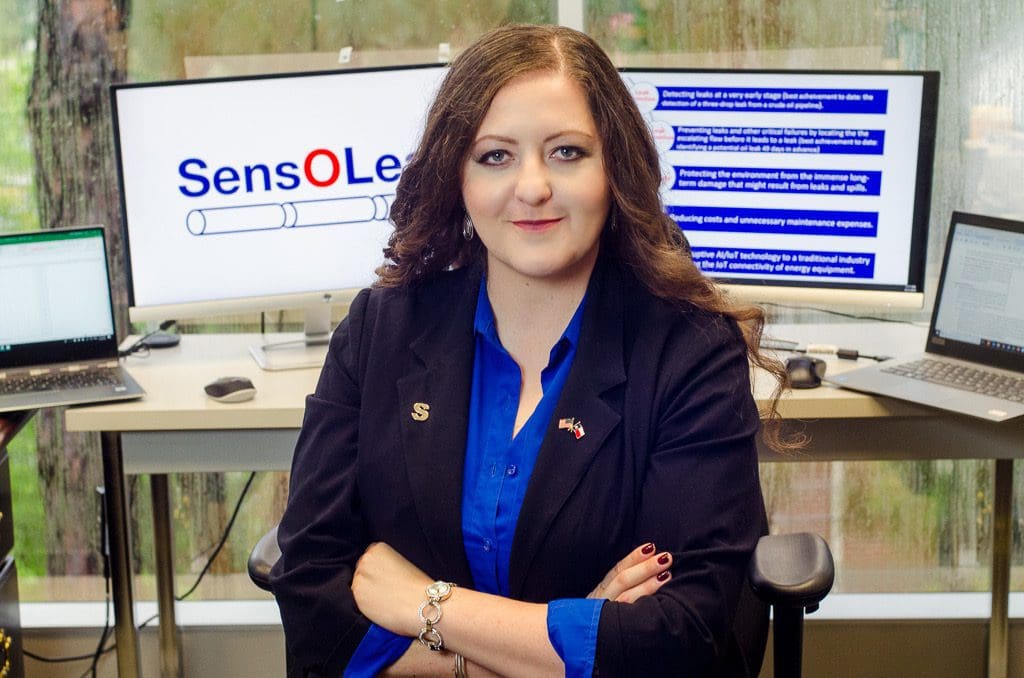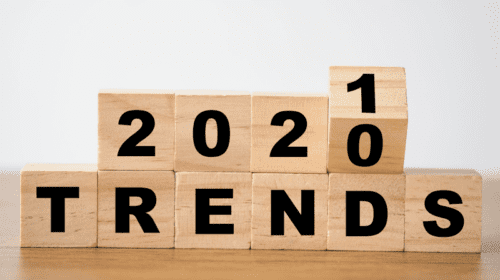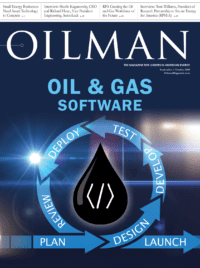
Below is an interview with SensoLeak CEO, Shoshi Kaganovsky and Vice President Richard Haun. The interview text has been left in tact, with only minor grammatical adjustments.
Tonae’ Hamilton: What inspired you to work on creating artificial intelligence for the oil and gas industry?
Shoshi Kaganovsky: It began eight years ago when I developed a system for helicopter engine monitoring. I decided to combine AI and machine learning to prevent critical failures by “identifying” the defects when they first begin and before they escalate into a critical failure. With the development of the product, we then had the ability to alert a pilot to abort, minutes before a potential crash. I also realized that the energy industry suffered from some dated pipeline networks and related systems. Naturally, failure of these systems does occur and can have had long term effects on the environment and pose a danger to personnel and the general public. Failures still occur despite the best efforts of operators ranging from eruptions of gas and product lines, spills, leaks, etc. As a result, I decided to create a system that could identify the occurrence of pipeline leaks quickly and provide means to track the events. My intent was to develop a system that could be accepted as an industry standard and to provide a game changing improvement in safety and risk management. Artificial intelligence can be looked at in many different angles and can be beneficial when used in the energy industry. At this point, I am very focused on the energy industry as my main target for safety improvement using artificial intelligence.
TH: Being a female innovator in a male-dominated industry, are there any challenges you’ve faced while working in the industry?
SK: There have been a lot of challenges. In an industry such as this one, my position is unique and usually, I am pitching my ideas primarily to men. With my name being “Shoshi” which is not gender specific, many assume I am a man. When I show up, I have been told that they are waiting for Shoshi until I tell them I am Shoshi and we have a laugh. All in all, it’s fine and I enjoy the business. It’s a pleasure to work with the guys and gals across the industry and it is enjoyable to be in this vibrant industry.
TH: When did you begin working at Sensoleak and what advancements have you seen your company make in the oil industry since you began?
SK: I founded the company in 2016! However, I started development of the technology in 2010. During that time, I was developing products and working as a tech scout. I also guided several start-ups. I would watch companies go under because of underdevelopment of their technology as well as their inability to predict all of the expenses. My strategy was to not enter the market before the technology was ready and be cautious regarding costs from day one. I had my technology ready for commercialization in 2016 and incorporated Sensoleak. I traveled for over 200 days that year and reached out to industries in many countries to get Sensoleak some traction. My team and I started offering proof of concepts (POCs) as a method to provide client familiarity with the technology. Some of these developed into long term agreements. As the company solidified further, I identified the U.S. as the best place for Sensoleak Global HQ. I planned the move to Houston, Texas in August 2017 just in time for Harvey, the hurricane, to flood my new hometown. I ended up volunteering with the Red Cross during the nights and helping with more physical tasks during the days. In December 2017, I opened my stand-alone American company and started recruiting people to grow the Houston business in the O&G industry first focusing on pipeline networks. I hired top consultants to get a handle on improving the technology at a quicker pace. Compared to when I started, we improved the technology on accuracy and with great methodology. The machine learning and AI provides a solid basis for identification of systems deviating from the norm. I am very happy with the development progress of our systems and our strong team. With Richard as our VP of Engineering, I am amazed at how the entire Wikipedia of pipeline knowledge and engineering can fit into a human’s head! Our entire team’s role is very important to the business and tech development. We managed to develop a system that has ease of implementation and can be easily introduced into existing systems. For decades, data has been collected from pipelines and our focus at this point is to minimize the false alarm rate toward zero. We want our system to assess issues that are the real problems, that are serious concerns for the operator. If there is any deviation from the norm, our system will catch it. Our system learns to detect any deviation from the norm and to make it visible to operators. False alarms are more than just a nuisance since they can eventually mask a real issue. Real issues result in bad press, and a lot of expenses for operators that can be avoided (environmental fines, clean-ups, idle time, maintenance, etc.). False alarms interfere with real alarms and we provide methodology so that our system can accurately separate real issues versus operational deviations in our systems. Companies in the past have tried to predict what will happen based on past events and have entered into comprehensive programs to prevent future incidents. Our system contributes to this approach in that it learns in real time 24-hours a day and 365-days a year, providing the best integrity picture in real-time. The AI recognizes trends in increased pressure drop over time, pigging events, start-ups, shut-downs, opening laterals to divert flow, and operational irregularities. This allows the system to identify and catch real issues early by separating the normal-though constantly changing-system parameters. With our system, we track the pipeline network functions and performance allowing the technology to learn on the fly. With any serious issue identified, it will automatically localize the individual system segment that has the underlying cause and provide operators with precise notification. During its normal operation, the technology continually evaluates the sensors providing data to yield notice to the operator of malfunctions occurring either due to an individual sensor or a zone. As the algorithms identify sensor malfunctions, they will ignore them until they again begin providing improved results. With the AI, machine learning and combined physics the technology contains all the necessary parameters to oversee a task such as providing early warning of a system flaw occurrence while assisting with maintenance by identifying questionable sensors.
Richard Haun: I joined in May and was immediately impressed with the level of tech that they had on the table, from their data systems to their data scientists. What I hoped to bring to the table was my 50 years of experience with pipelines, much of it in the field. My background includes a great deal of analytical work associated with the pipeline business and software development to resolve the tougher problems. I have written hundreds of programs in the course of my career. One of the things we do at Sensoleak is combine AI with principles of physics, sound judgement, and engineering analysis. The disadvantages of strictly using engineering software with pipelines is that when you first start a system, you can only provide estimates of fittings, line roughness, product density and viscosity which can lead to inaccurate estimates of predicted to measured values. The initial evaluations for flowing gauge pressures in pipelines are therefore always based on estimates and as internal roughness increases over time, the estimates are further away from reality. Because of these considerations the pipeline parameters are best identified by the operational characteristics. By incorporating AI and machine learning, the advantages are that you can actually learn from the system and resolve parameter evaluations internally over time. Because operating procedures are complex, our systems are constantly monitoring changes and once an anomaly is identified, the system automatically drills down in the anomaly where you can decide if the anomaly is operational, if there is a leak, or if anything is abnormal due to sensor detection. If it is found to be an unusual operational procedure result, it can be picked up through the system and learned to be acceptable. Naturally this is useful for future operations of the pipeline. Of course, with any new pipeline network detection system, operators still have to provide information so that any anomaly occurrence is properly characterized to prevent a false alarm. You can drill down and read the pipeline better.
TH: With Sensoleak’s move to Texas, how do you think the move will affect the company and, furthermore, the oil and gas industry?
RH: The center of the oil and gas industry is Texas and with our move, there is more access to many engineers in Houston to help support the implementations. Most of the international companies are in Houston. I believe that being so available to the operating companies as well as the refineries and pipeline operators, we will be able to catch on very quickly as a preferred provider. We already have things to do here and the storm (surge in clientele) is coming. I think it is an ideal location and we will be very successful here. We will be able to expand our role in the oil and gas industry through one successful implementation after another.
SK: I second that. I used to fly so much to the U.S. and would realize that if you don’t have a local presence, it is a difficult way to promote the business. I learned from Americans that unless they are looking in the “white of your eye,” nothing will be found. I also learned that if I am present and working in their time zone, the demand is higher and we can accomplish way more. Just seeing the team working in one space makes me happy. When I just started, I had a couple of developers in Israel, but because there isn’t really an industry there, I had difficulty recruiting local O&G engineers so I hired remote ones from Canada and the U.S. Now we can collaborate better and everyone can brainstorm and write ideas on the board which is more convenient. Houston is an international hub and you can feel and see a lot of languages and cultures which is way more interesting. The timing is right with our move to Texas, as O&G majors seem to be ready to adopt new tech. I feel welcomed now in Houston, but whenever there’s a need to explain my personal style I say that I’m not impolite and I’m not aggressive, I’m just Israeli – hands on approach, hard work and a very fast pace. This is how the culture is there. As ex-military I am used to trying to take things forward fast, keep the best interest of my company and team in mind while presenting the best solutions to existing problems. As for the machine learning experimentation Richard mentioned, we want to see this company become successful and I can see it is beginning to happen now. We are about to establish our presence in the industry pretty soon. We are meeting with companies big and small and discussing how we are able to assist them in ways most beneficial to them. If our move here helps to improve the industry and has a favorable impact, then this would be our real success – seeing this technology benefiting the industry.
TH: Can you describe the artificial intelligence (AI) technology you have in mind to replace the current pipeline infrastructure?
RH: I really like it. The AI, methodology, and tech applications we’re using are state-of-the-art and very cutting edge. The analytics and learning methods are based on engineering logic of the pipeline network system. The overall AI system is automatic, can drill down into circumstances, and identify if a circumstance is an operational event. The system can learn the data as it comes in and predict analytical benchmarks and find anomalies. Anything that deviates from the norm is called an anomaly. They are discovered and rationalized to determine whether or not individual sensors are being affected. The system is a lot smarter and faster than an individual. It gives individuals overseeing the pipeline networks the opportunity to work smarter and you don’t get the ‘crying wolf scenario’ of false alarms. The system gives you honest alerts and includes the engineering knowledge automatically in the intelligence software. Regarding its teaching and learning times, the algorithms are being taught and are developing norms. The algorithms are automatically updated as norms change. The system can readily adapt and learn with current happenings which the pipeline systems today could really use. Once you have the correct information it is also really clear which components require maintenance. This is an added ‘plus’ of the system implementation.
SK: The innovation lies in the correlations and shows how variables affect each other. The beauty in machine learning is that it can learn over time and teach itself and adapt to changes. In terms of developing technology, we want to get to the point where machines can learn specific alerts, be able to prevent failures, and identify what is happening in the pipeline network and what should be done. Right now, the algorithm helps decision makers make decisions regarding maintenance, operations, safety and identifies the network segment which encountered a problem. We plan a more robust system in the future that can output descriptions of the recommended maintenance schedule items and procedures in a timely manner for more efficiency.
TH: What effect do you expect the new technology/ AI to have on the pipeline infrastructure and on the oil industry as a whole?
SK: The aging infrastructure needs attention although the industry is very diligent. It is important to protect nature and water bodies that we have and our system which allows network segmentation, can allow the algorithm to ‘tighten up’ evaluations in different segments per client wishes. As an example, segments of pipelines that go near residential areas, schools, churches, wetlands, lakes or rivers, can be automatically identified to allow the algorithm response to be more sensitive for anomaly detection. We optimized a process of data analysis and we are putting data in order and making it more accurate than in the past. Although, our system can be applicable to monitor anything that can be equipped with sensors, pipeline networks are our current focus. With our system, we can help preserve the environment, improve safety, save litigation, and create a friendlier public environment for operators. If we take for example one of the offline projects we ran with one of the three largest O&G companies in the U.S., we were provided with several months’ data (pressure, flow, temperature and density) and managed to identify all the defects, all the failures and all the false alarms while our competition identified all the false alarms as leaks. Major problem that costs the industry tens if not hundreds of millions of dollars annually – where the operators respond to these (false) alarms by shutting down the pipelines, dig along the line, just to realize there’s no leak. Sensoleak is trying to minimize false alarm rate to zero and provide the operators only with real alerts that require their attention.
TH: Besides the inclusion of artificial intelligence and other innovations, what other changes do you think need to happen to improve the current state of the oil and gas industry?
RH: I think the operators of oil and gas are very conscientious and I believe that they are striving for the best. It’s difficult to change an old industry and it has been on a slow though steady improvement for the last 50 or 60 years. I have to say that the oil and gas companies are staffed with very responsible people. I have many colleagues in the industry and they never take safety for granted and are environmentally-conscious. The companies work diligently and have tough standards for the employees and if employees do not follow through with policies, they will be terminated. I love the industry and have been in it for a long time. I think the industry is also quite responsive to implementing available improvements that improve system integrity. Company executives that are operating pipeline networks have to answer to government agencies, shareholders and peers. I think they have been very responsive in moving system integrity improvements forward. This AI system may be the next selection for many of them.
TH: What changes or innovations would you like to see happen in the oil industry or specifically in Sensoleak going forward?
RH: I’d like to see our system installed in all of the pipeline control rooms, but if not in the primary systems, at least in the sub-systems. Everyone has a system which is an excellent approach. Having a primary system in place with another unobtrusive parallel system running essentially off-line is something I think to be a great benefit.
TH: Are there any other types of artificial intelligence and technology you are working on for other issues in the oil industry?
SK: Applications are infinite. When I researched new industries while working on aircraft, I considered both the oil and medical industry. Back in the 60s, our vascular system was compared in similarity to oil applications. A question that came to my mind was, “What if we used systems for the oil industry to detect problems with the heart or other organs in the body which can save a life?” If I can save one person’s life I would know that I left behind something meaningful with my work. Since the medical industry is rather difficult to penetrate, I felt the oil industry was ready for us and there were many issues ready to be solved. In the future, I am hoping to develop applications that can prevent anything that can affect our well-being. We can use data to improve current systems whether it be for oil and gas, wind energy, rotating equipment, aircrafts, or health.
Tonae’ Hamilton has been a contributor and associate editor to the magazine for two years. She has been writing professionally for almost four years. In her free time, Tonae’ likes to spend time with her three pets, cook, and binge-watch Netflix shows. Tonae' has a Bachelor of Arts in Communication from McDaniel College.










